Age of Wonders: Planetfall has endearingly weird factions
Who do you want to be, the Russian space dwarves or the Amazonian dino brigade?
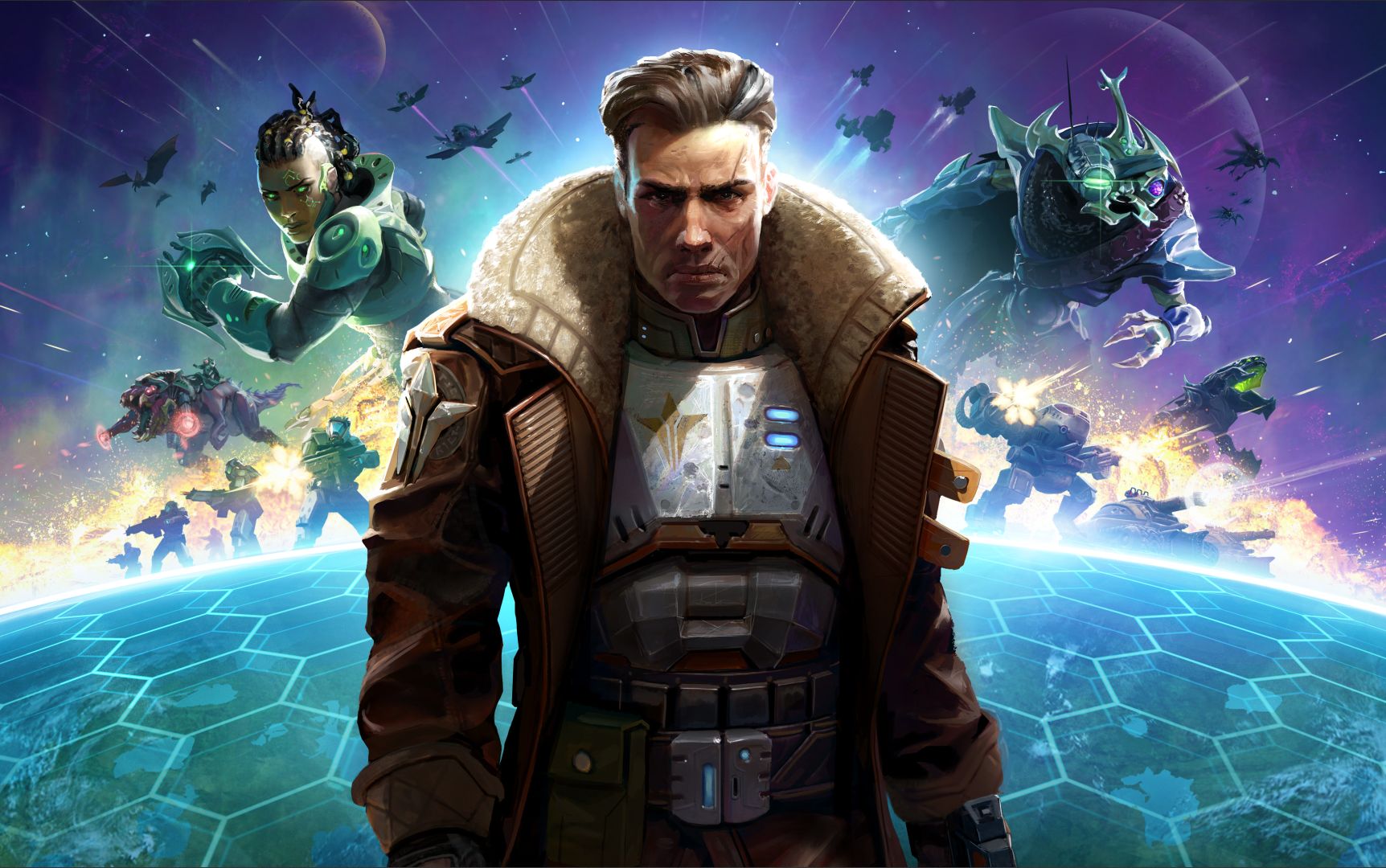
After years of turn-based strategy games in a fantasy setting, the Age of Wonders series went sci-fi with Age of Wonders: Planetfall. "When we started conceptualizing this game one thing that was sure from the start was that we wanted to make a terrestrial-based sci-fi game," says Triumph Studios' game director Lennart Sas. "We wanted to take the Age of Wonders formula and do it on the planet level with a lot of detail in the battles, which are mainly ground-based—with air support and orbital strikes too, but it wasn't a space 4X like Stellaris."
What makes Planetfall stand out is its factions. During the PC Gaming Show at E3, Sas and principal gameplay developer Tom Bird menaced host Sean Plott while enthusing over options like "scavenging cyborgs or the amazon bio engineers who ride dinosaurs into battle." It was a memorable moment.
"When we started designing the factions we took what most sci-fi games do," Sas explains, "factions from different alien backgrounds without too much of a connection." It felt wrong, until they started unifying these factions by giving them a shared history. Suddenly, they clicked into place. "These people have existing personal grievances," he says, and that makes all the difference.
Only one of the factions is alien, but most of them feel alien. They're offshoots of humanity who had to adapt to survive the collapse of their empire, the Star Union. Cut off from hyperspace for centuries they altered themselves to suit the worlds they were trapped on. Now, with FTL travel suddenly accessible again, they're meeting long-lost cousins.
Like every family reunion, it's messy.
Amazons: Dinosaur-riding laser ladies
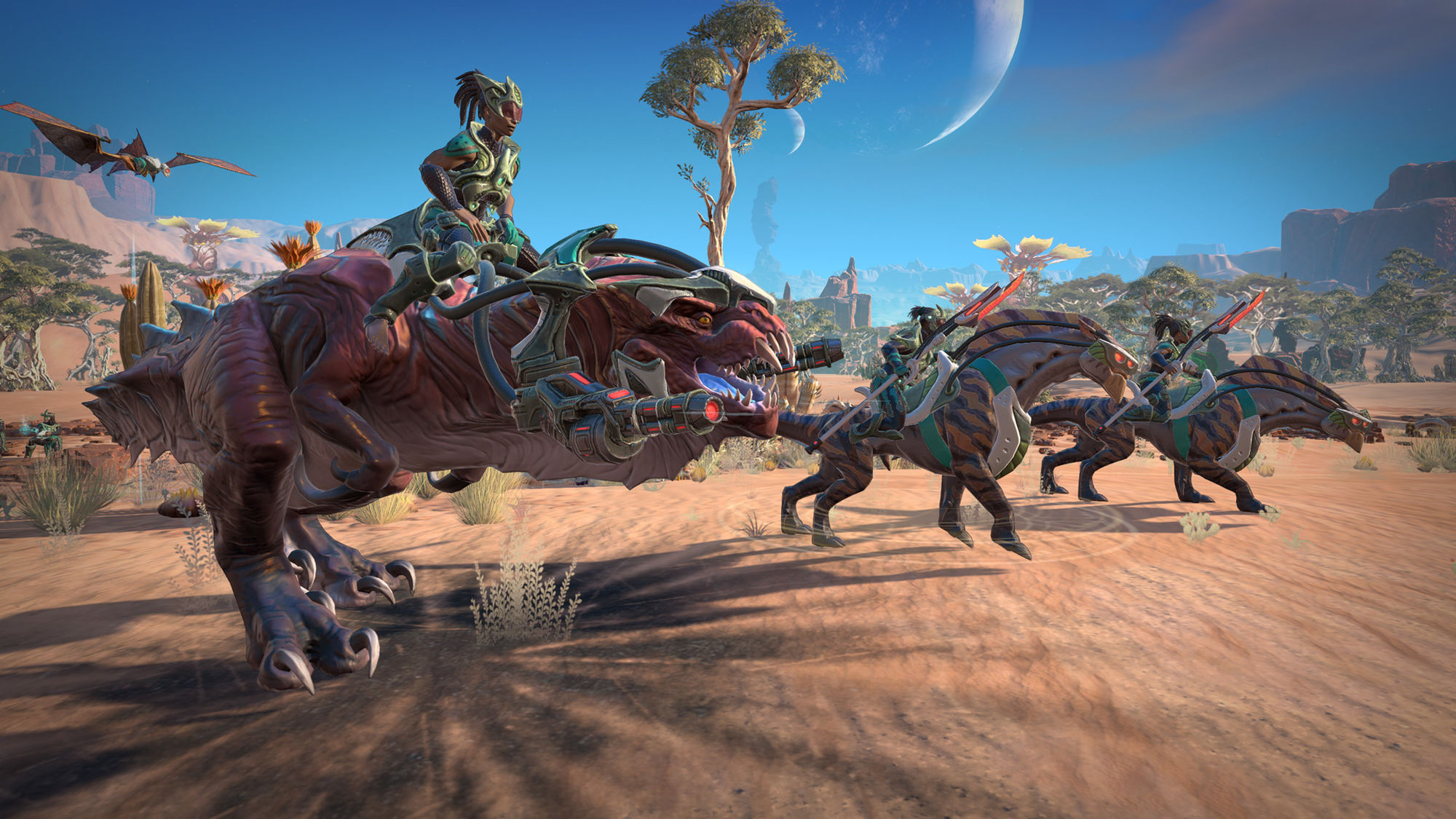
When Planetfall appeared at the PC Gaming Show, the dinosaurs with lasers were an immediate hit. Even if you didn't grow up with Dino Riders toys, the idea's a compelling one. The backstory of the Amazons is that they were genetic engineers midway through terraforming a frontier world when hyperspace broke and they were marooned. Modifying the planet's dino-like inhabitants and forming a symbiotic relationship with them was the only way to survive.
And as well as modifying those creatures to create laser Tyrannodons and pterodactyl scouts called Shrikes, they modified themselves and ditched the male half of the species. "The exact reason why and how that happened is not disclosed at the start of the game," says Sas. "It's not really important for their abilities and their themes. A lot of discussion has started on the forums!"
The biggest gaming news, reviews and hardware deals
Keep up to date with the most important stories and the best deals, as picked by the PC Gamer team.
Though they began as scientists, the Amazons became warriors and their look reflects that. "We modeled their appearance after female MMA fighters," Sas says, "looking at their physique, their facial expression."
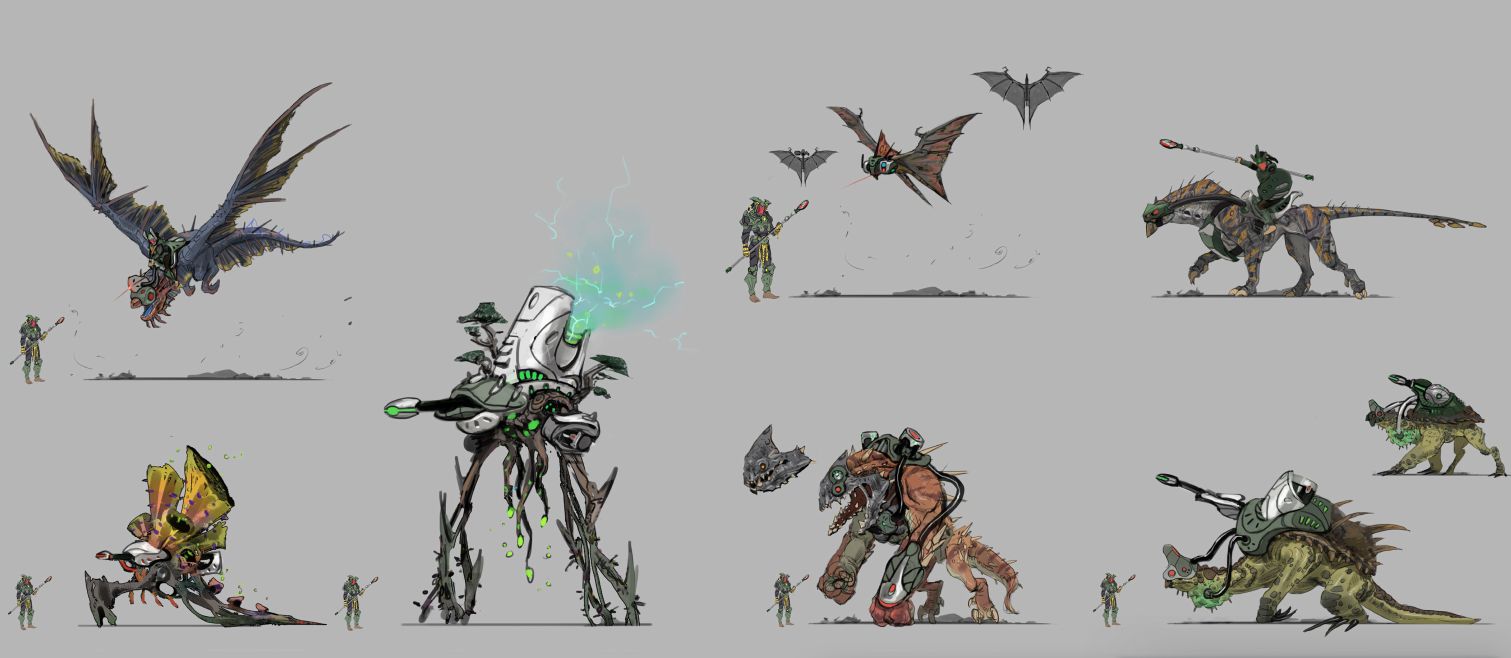
As well as dinosaurs, the Amazons modified the fungal-looking Arboreans, another species from their homeworld. This gives them rapport with an NPC faction called the Growth, who are sentient plant beings, and the two can even share mods.
The Amazons continue tinkering with genes throughout the campaign. "Part of their narrative, the internal story in the campaign is about 'How far do we go with this?' At one point they will also get the question whether or not to merge alien DNA in their own DNA. What does it mean to be human any more?"
The Syndicate: Shiny crime nobility
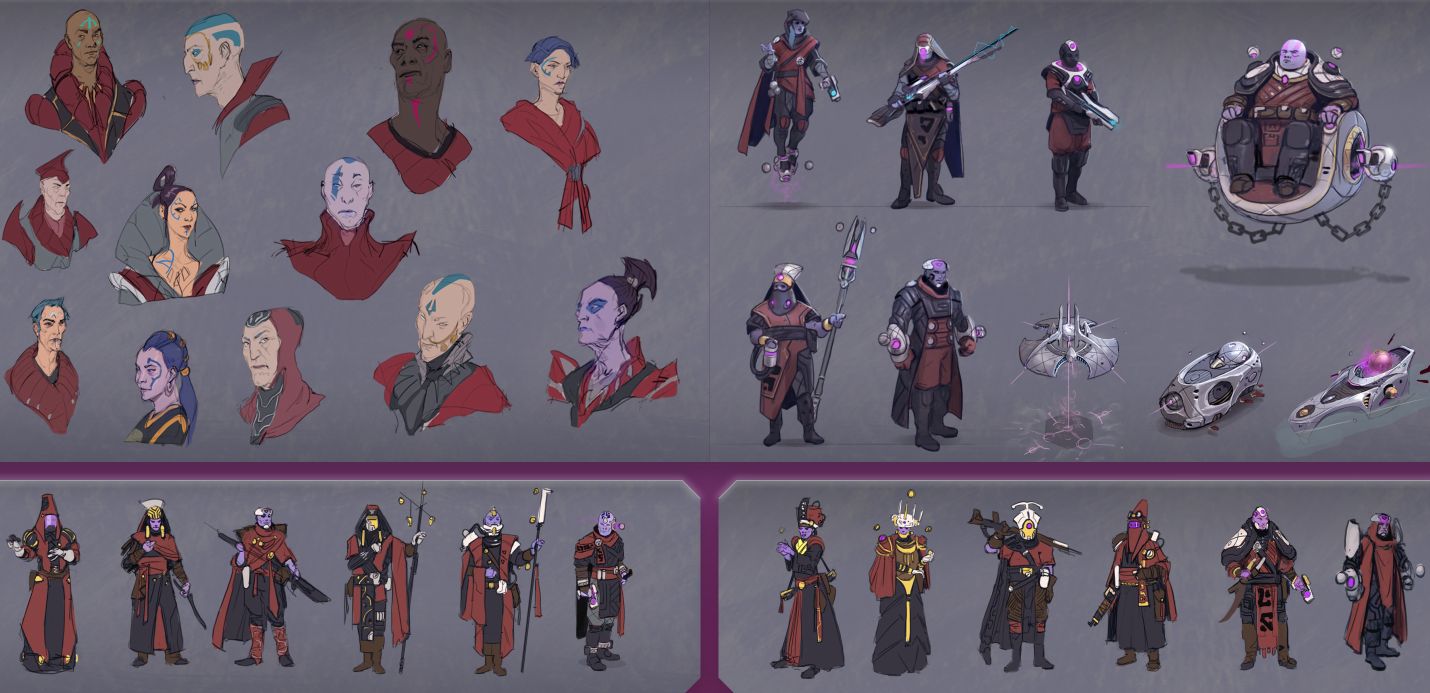
If you want to be sneaky the Syndicate are for you. The descendants of explorers who settled outworlds then used that to bargain for rank within the Star Union as it spread, the Syndicate were once aristocracy. They could afford all the best tech and body mods, and prospered after the collapse by becoming slavers. Their basic troops are indentured slaves forced into military service to pay off their debts, and Syndicate tech can even resurrect them if they try to weasel out of those debts by dying.
"Nasty bunch of people," as Sas puts it. "Their abilities are about cloak and dagger, they're able to sabotage relations with other people." That sneakiness extends to scouts who are invisible on the map, and teleport away if hit by an attack that would be fatal. Their favorite weapon is a knife in the back, but failing that they're into psionics and arc weapons that shoot lightning.
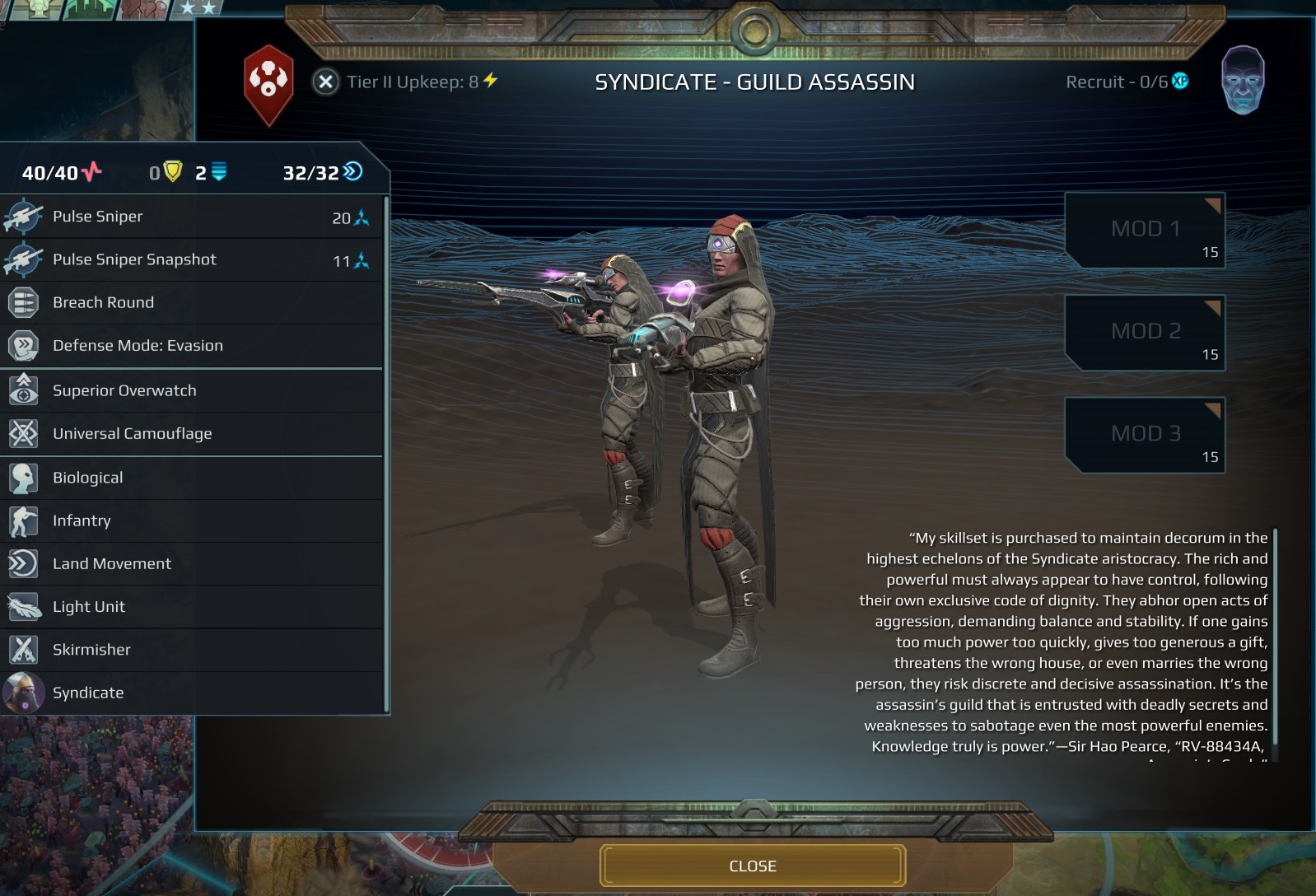
"If you look at Earth history they represent maybe Italian or Dutch noble families or patricians who went out at sea to gather riches and loot the world," says Sas. Their look combines those historical influences with the unused concept art Moebius did for Dune. The result is maximum fanciness. Imagine Jabba the Hutt's cartel, but then make it fashion.
That said, you don't have to play the Syndicate as evil. "Although you have skills and abilities that you can use to subjugate others in all sorts of nasty ways you don't have to use them," says Sas, "just like other factions have weapons of mass destruction that they don't necessarily have to use. The tech tree is so big that you're not entirely stuck to using all of their abilities in order to win. Maybe in a very big game, but in most games you only research 50% or so of all your available tech. You can be an enlightened Syndicate, you can go for the celestian secret technology and redeem yourself if you want to."
The Vanguard: Your XCOM squad got very lost
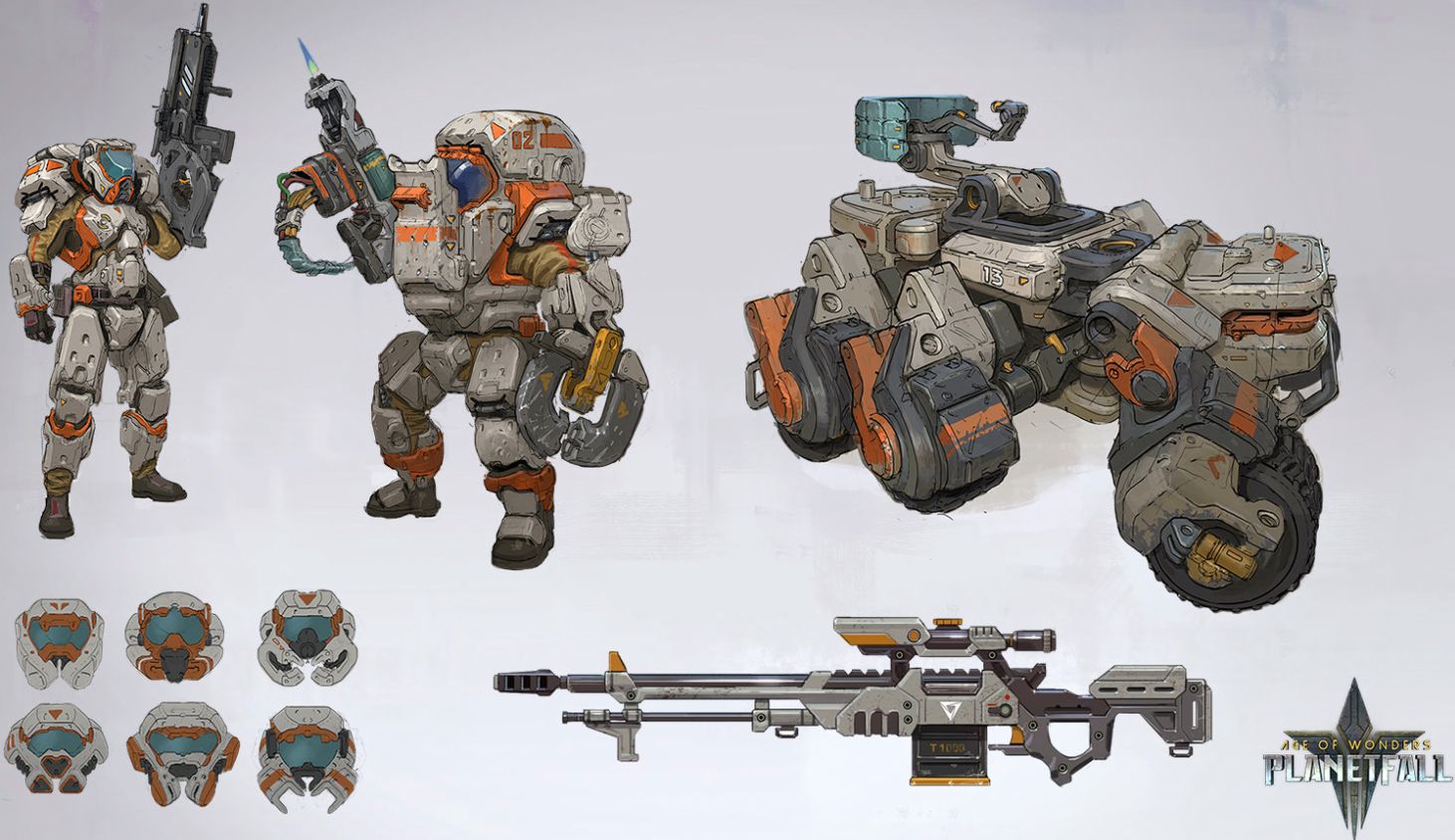
The Vanguard are one of only two factions whose basic trooper can go into overwatch. When that unit, a squad of armored dudes with machine guns, runs up to a piece of cover marked by a shield symbol and hunkers down, it feels like a little game of XCOM is happening on an alien world.
In the oddity of Planetfall, the Vanguard are an island of familiarity. "There's a bit of a trope that you make the faction that plays the most straightforward, make them look the most familiar," Sas says.
One look at a Vanguard unit should tell you what you need to know about it. "It's easier to read what a unit does, a tank is a tank, an aircraft flies. Some of the more exotic races you might want to look twice at their ability list, at what they exactly do. We take the Vanguard as the campaign introductory race so the story gets presented from their angle."
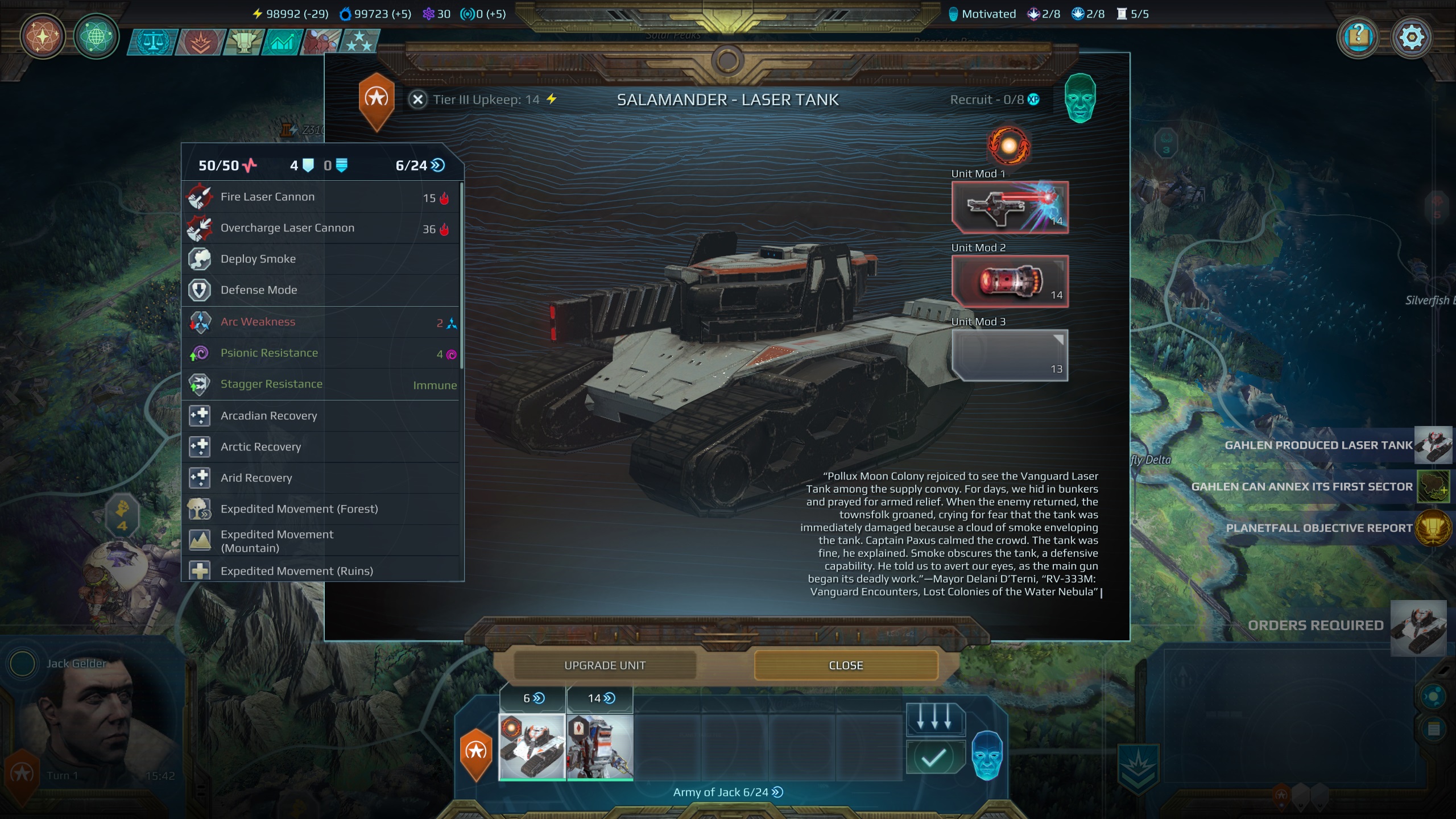
They're viewpoint characters, the ones you play in the tutorial. An expeditionary force made up of society's dropouts who were sent to the frontier in sub-light ships to set up a hyperspace portal, they come out of cryosleep and return home 200 years later to find the Star Union they worked for gone. Then they see all the strange things humankind has transformed into while they were gone and say, "What the hell happened to you?"
They don't have to stay baseline humans though, and can change over the course of a game. "That basic trooper you can mod with all kinds of cool stuff in the game—jetpacks, or infect them with an alien parasite—and basically take that standard soldier and make them relevant in the endgame, but also tailor its abilities to face particular threats. If you're facing a psionic enemy you want to give them some mind protection."
Kir'Ko: Vomiting battle-bugs with a grudge
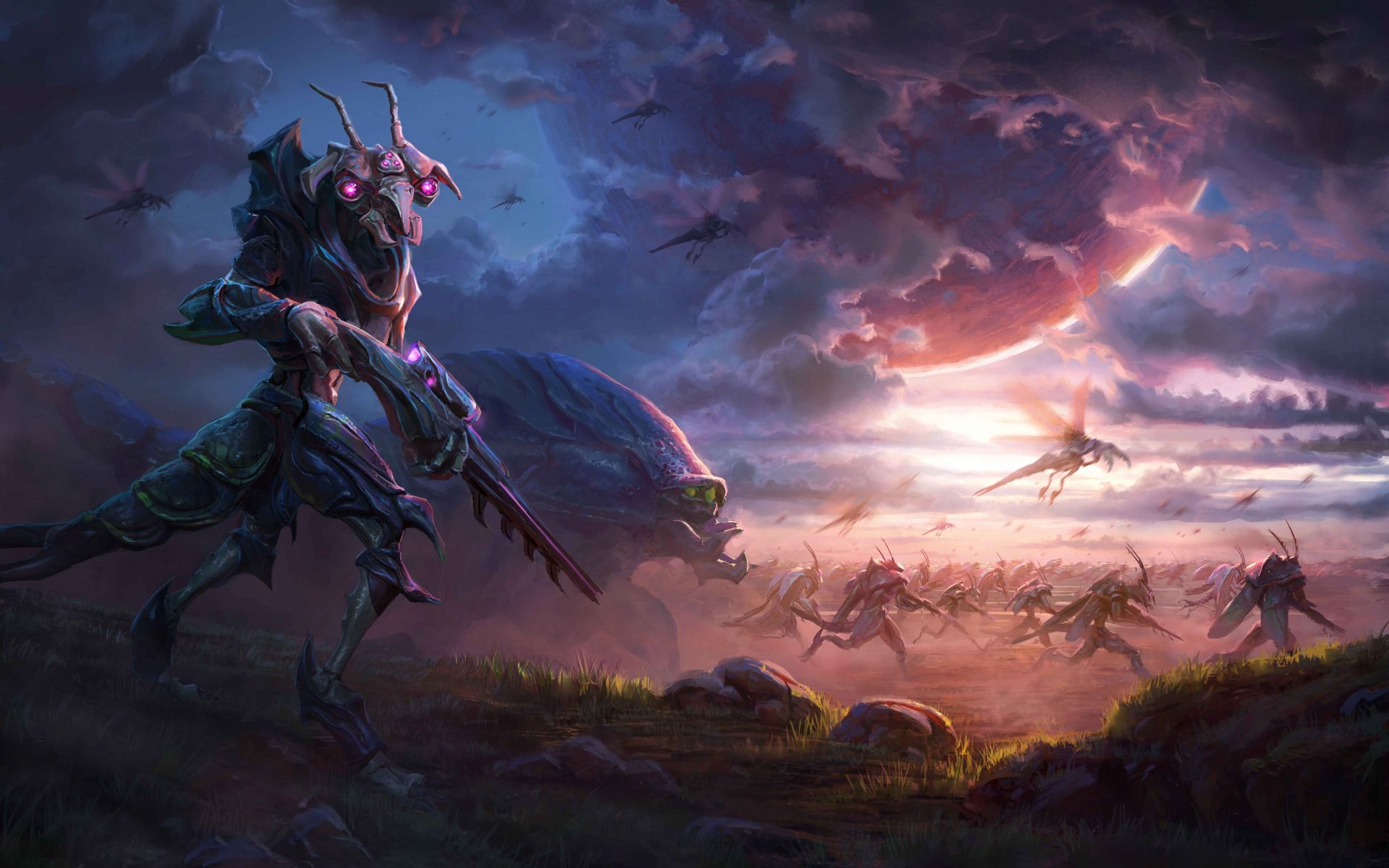
"The pitch for this race is that we want to tell a possible origin story for the many alien bug swarms that you see in sci-fi," says Sas. The Kir'Ko are the one alien faction in Planetfall, not evolved or modified humans. Once united by a hivemind, they were conquered and enslaved by humanity. With the collapse they're free, and it's time for revenge.
"Central to the gameplay is a swarm mechanic, which means if you position them close together they get buffed and you can increase the buff effects from that staying together." They move in packs focused on melee, but they do have access to ranged attacks. Kir'Ko larva can be grown into specialist units, from fliers to naval creatures that look like something out of H. P. Lovecraft.
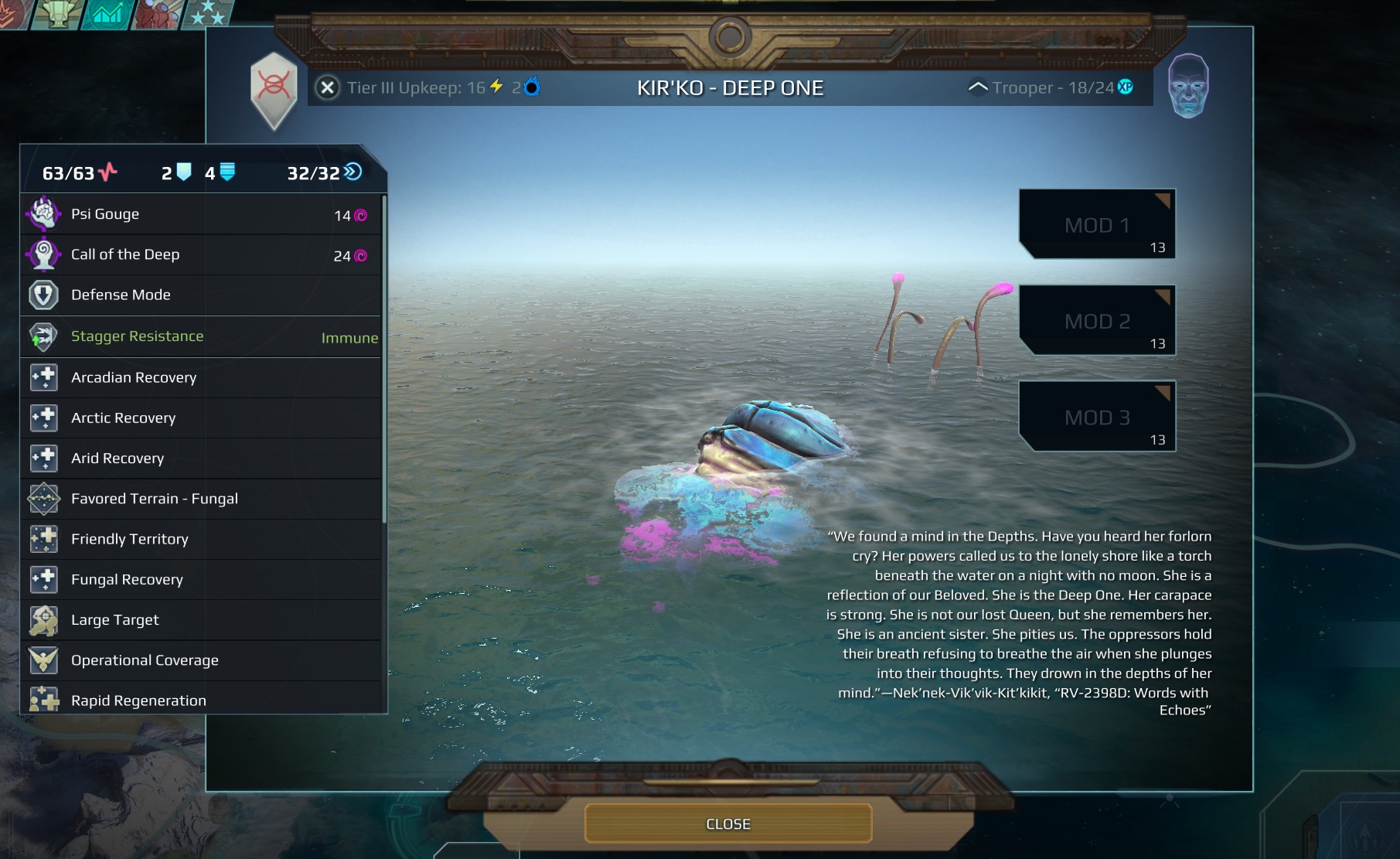
"Their main infantry type is a melee unit that spits battle vomit," Sas says. "A big splash of corrosive spit on enemies. A battle with the Kir'Ko, it ends up in two colors—the purple is their blood, it spatters everywhere, and the green stuff is their spit. Everything gets gooed under when you fight them."
The Kir'Ko swarm absorbs territory as it grows, spreading across the map like termites through walls. "By conquering another faction's colony then, instead of burning it to the ground, putting your own people there you can absorb that population into your own multi-ethnic empire. Then you get access to their tech tree too."
The ultimate aim for the Kir'Ko is to rebuild the hivemind they lost when they were essentially lobotomized by the Star Union. "Hopefully at one point they will be able to make the hive queen back again," Sas says. "Part of their tech tree and campaign story is about finding either reconciliation with the surviving humans or to go on to a path of vengeance and basically destroy humanity."
The Assembly: Ghoulish cyborgs want your organs
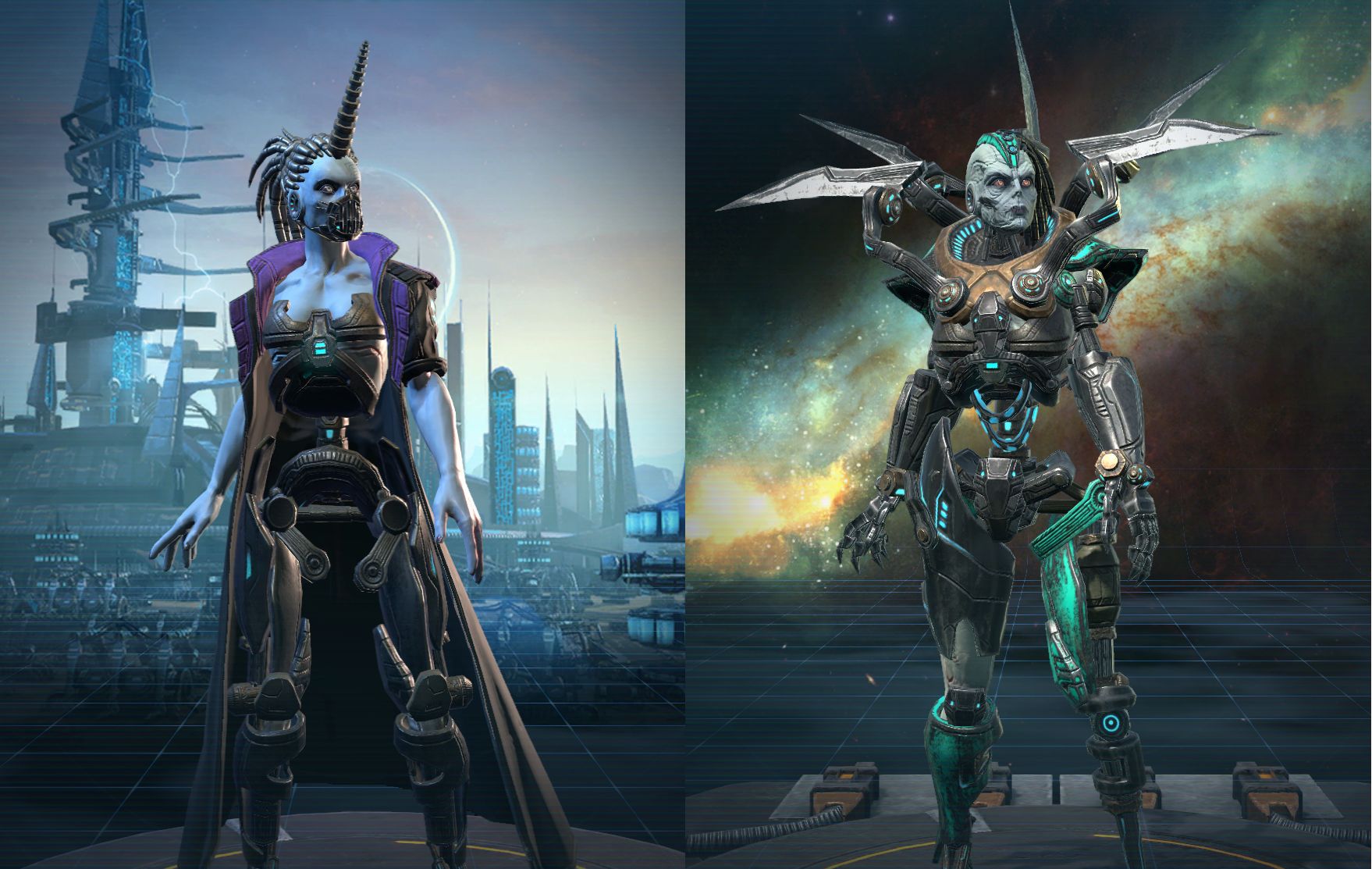
The ancestors of the Assembly were clones, vat-grown by a company who manufactured augmentations for the military and the rich. After the collapse they were left to their own devices, and they took those augmentations and weapons and used them against each other.
"In their battles they took bits and pieces—livers, heads from fallen enemies—and managed to piece them together in order to extend their life," say Sas, "and that's basically how the Assembly emerged. They managed to create peace on their world by absorbing all enemies into their faction and they also created the ultimate circular economy. Very environmentally friendly."
Now they're cyborg recyclers, perpetuating their unnatural lives thanks to involuntary battlefield donations. The Scavenger units rip out enemy guts then keep the best bits to heal themselves, while Reverse Engineers resurrect the fallen like cyber-necromancers. With each victory they get better at research, taking everything they learn in combat and using it to leap up the tech tree.
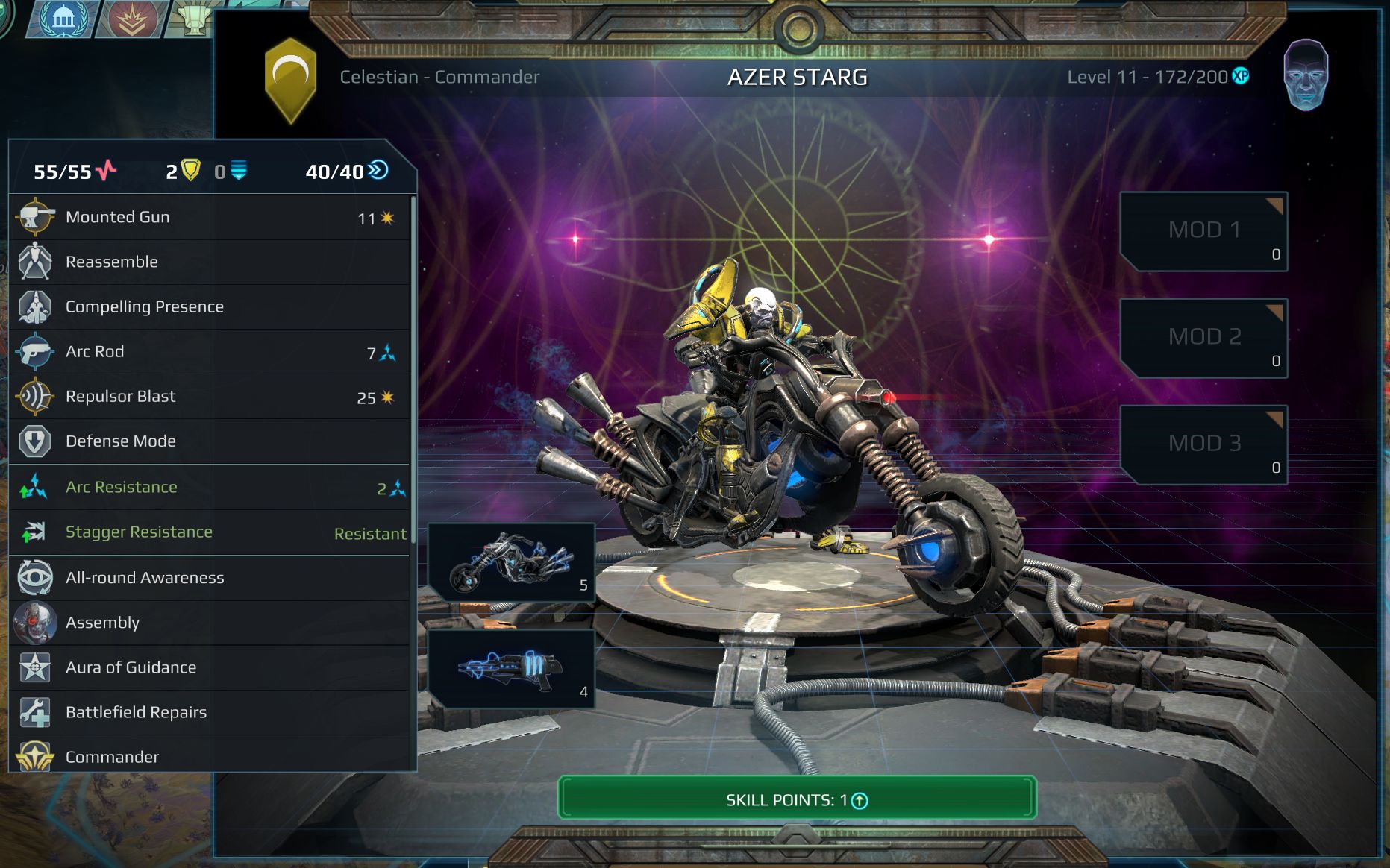
"They are still functioning on human brains," says Sas, "so they are not AI-controlled inherently. The human brain is still central to them. Some of them are more humanoid, they go as far as Robocop where they still have a human head and torso, while others just have a human head and brain controlling a metallic construct."
Their look is a bit punk, a bit heavy metal. Some of them have mohawks, a lot of them look like they took fashion cues from Iron Maiden's mascot Eddie, and some of them have motorbikes for bodies.
Then there's the Wrecker, a giant mech suit controlled by a tiny human head. "The cool thing is this is also a vehicle or a mount for your heroes," says Sas. "You can find one of these suits and the you equip the suit on your hero and you would just see the hero's head attached to that body. Even if you're an Amazon hero and you've managed to find one of these Assembly suits you can equip that suit and you see just a little head with the dreadlocks stuck inside this thing."
Dvar: Squat bombardier industrialists
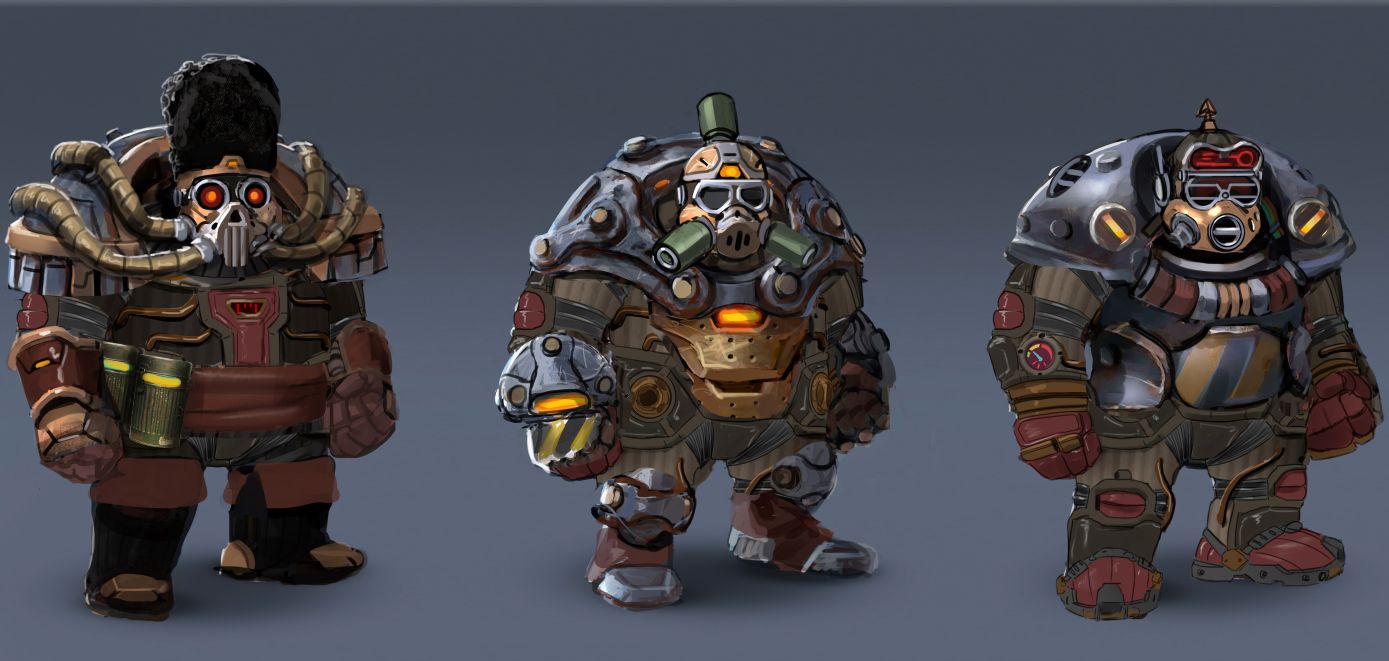
Stranded on a harsh mining colony when the Star Union fell, the Dvar transformed their survival suits into armor that would protect them from anything, whether nuclear fallout or biological weapons. Now they rarely leave the things, and even on the commander creator screen altering their facial features merely changes the assortment of pipes and goggles on their masks, as well as maybe putting a jaunty bearskin hat on top.
"It's obvious that the Dvar are based on the space dwarf trope," says Sas, though he explains that there's no "genetic link" between them and the fantasy dwarves of previous Age of Wonders games. The Dvar are machinery specialists, with a sideline in bombs and tectonic manipulation. On the campaign map they can flatten mountains or raise them, and their basic troop the Trencher can summon cover out of flat ground.
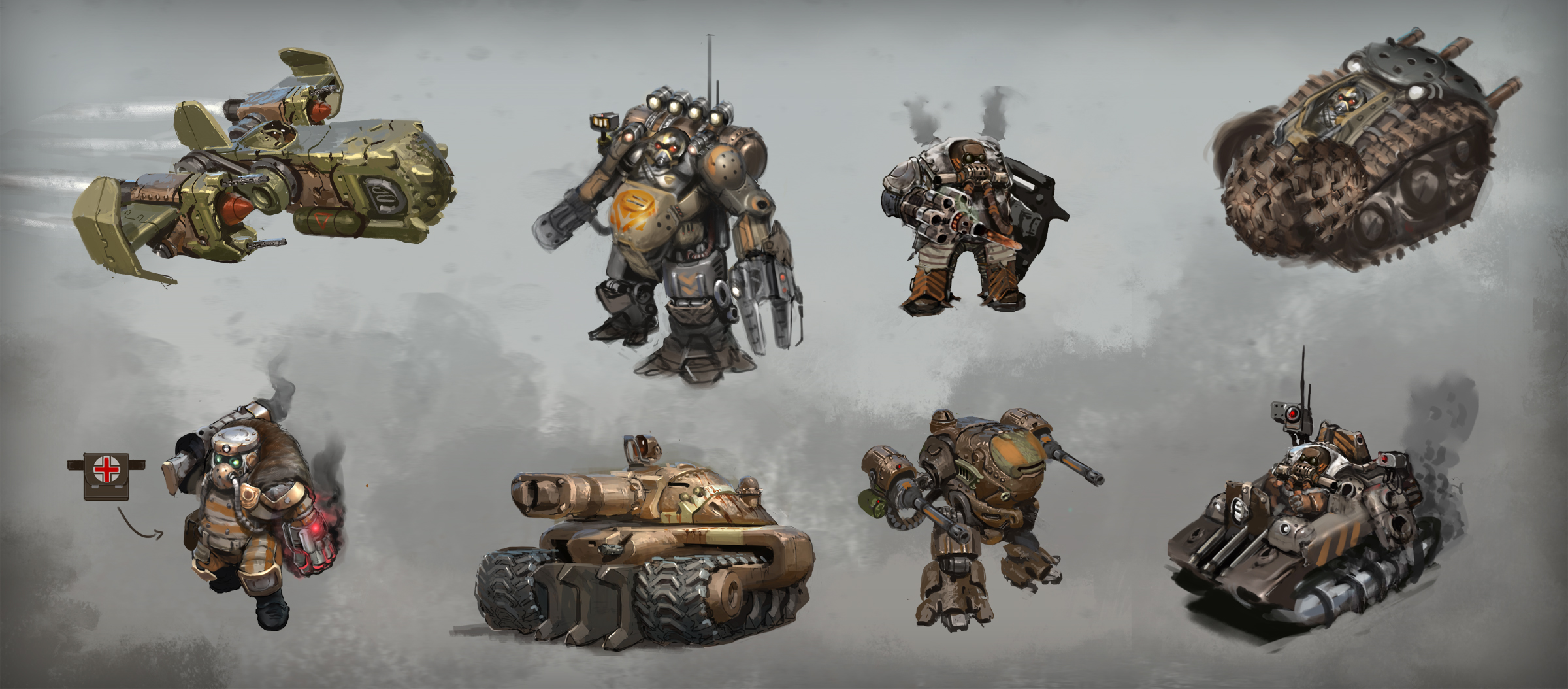
The ability to create cover doesn't make them turtles, however. The Dvar have plenty of melee weapons, like their two-handed mining hammers fitted with rockets. They soften enemies up with explosives then get up close. Even their jets are designed for ramming attacks. "They move forward steadily as a steamroller," Sas says. "I would call them the steamrolling race."
Their big-belly suits and bomber planes have a distinctive look. As Sas explains, "We have one guy on the concept team who is a World War 2 nut and he based some of the designs on Russian military hardware. Apparently it had a very different design language from American and German tanks, it was more rounded."
And that's how the Dvar ended up Russian bomb-making oligarchs. "All dwarves are Scottish," says Sas with a sigh, "even space dwarves. We didn't want to go there."
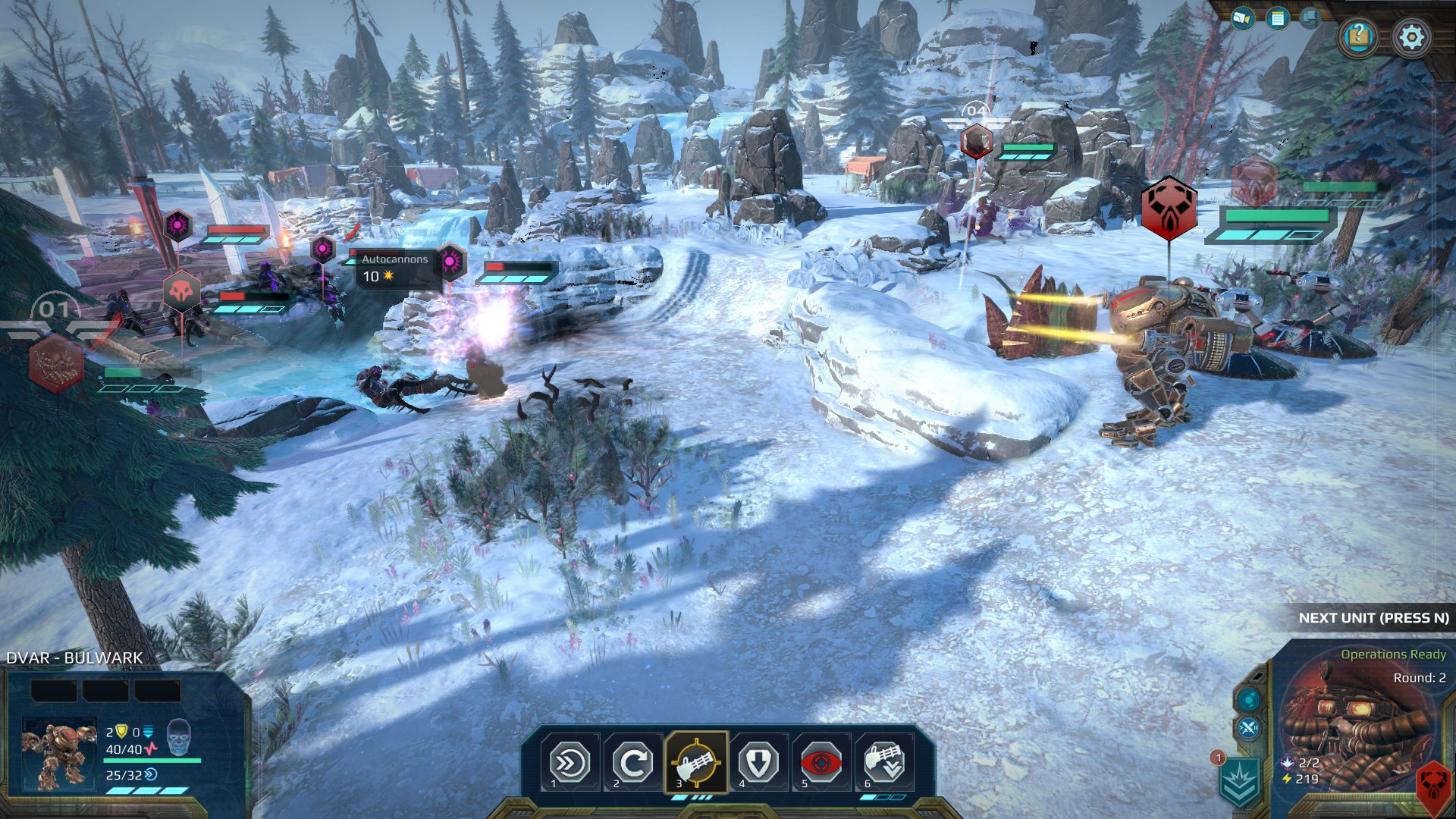
When I'm the Vanguard I want to do right by others, finding diplomatic solutions even with the jerk who has a dumb mustache. When I'm the Dvar, my trigger-finger gets itchy. Real itchy.
But that doesn't mean I play them aggro all the time. It means that when I do choose a diplomatic option—settling things with that rival Dvar house who have a mining claim on the same world, in spite of the grudges between us—it feels more meaningful for it. There's a reason Civilization players love the myth of Nuclear Gandhi. Playing against type is fun too.
That requires having a type in the first place, and the factions of Planetfall provided exactly that. They're flavorful, and they make you want to roleplay. The only hard part is choosing between them.

Jody's first computer was a Commodore 64, so he remembers having to use a code wheel to play Pool of Radiance. A former music journalist who interviewed everyone from Giorgio Moroder to Trent Reznor, Jody also co-hosted Australia's first radio show about videogames, Zed Games. He's written for Rock Paper Shotgun, The Big Issue, GamesRadar, Zam, Glixel, Five Out of Ten Magazine, and Playboy.com, whose cheques with the bunny logo made for fun conversations at the bank. Jody's first article for PC Gamer was about the audio of Alien Isolation, published in 2015, and since then he's written about why Silent Hill belongs on PC, why Recettear: An Item Shop's Tale is the best fantasy shopkeeper tycoon game, and how weird Lost Ark can get. Jody edited PC Gamer Indie from 2017 to 2018, and he eventually lived up to his promise to play every Warhammer videogame.

